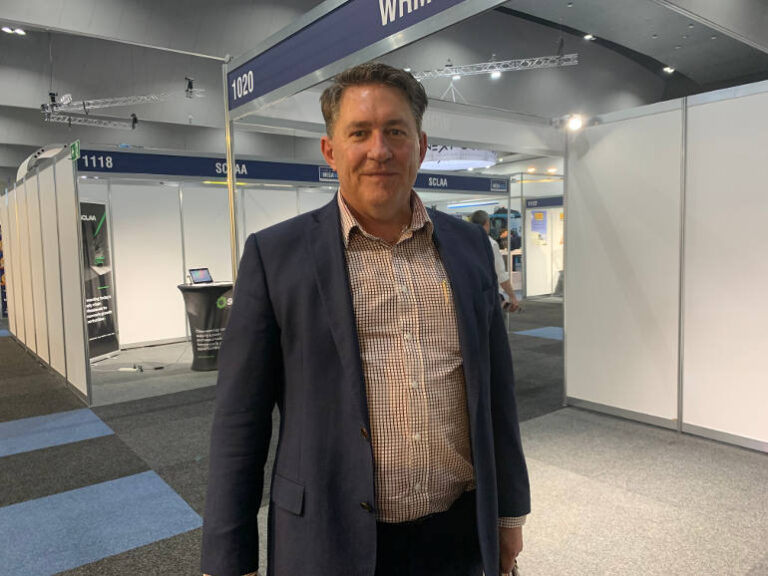Prological business consulting group’s founder and managing director Peter Jones at Megatrans 2022 exhibition and conference event in August 2022
Supply chain consulting group Prological’s founder and managing director, Peter Jones, is waiting for word from headquarters of a large e-commerce business operating in Australia on the go-ahead for a new warehousing and distribution facility. On this facility, the energy production and storage systems only made ROI sense once it incorporated its own EV fleet of delivery trucks.
Only made ROI sense with its own EV truck fleet.
This opens up a new paradigm in looking at solar power and batteries within the industrial and logistics property sector.
Jones was speaking at the Megatrans 2022 conference and exhibition in Melbourne in August where he set out the economics of building a whole new facility for a consumer-focused e-commerce group that presently outsources its deliveries to a freight group.
“They needed a new facility. Sustainability was part of the agenda that they have. So we built sustainability into the design of the new facility. The transport thing was an afterthought,” said Jones in an interview on the side of the conference after his presentation, adding that to fully power the warehouse 24/7 required a system aligned with a 10-year ROI.
However, when they brought a 10-truck EV fleet into the calculations for feasibility of a solar-powered warehousing including 24/7 warehouse operations, return on investment almost halved to a little over five years.
“They needed a 2.2 megawatt-hour battery to run the site 24/7 on its own; to be able to run the fleet and the site we only needed to go to a 3.2 megawatt battery and an additional 300kwh of solar generation. So whilst that was a bigger battery, we were getting the offset of all the benefit from running the electric fleet powered by free energy off the roof.”
To be clear, the ROI calculations now took into account the cost of diesel versus solar battery charging, and the cost of recruiting, training and managing its own drivers and fleet of vehicles, as well as the cost of managing and maintaining its own fleet, versus paying a 30-35 percent margin to an outsourced delivery group.
Bringing the fleet in-house is what tipped the equation to GO.
“Correct. That’s what makes the difference,” said Jones.
Jones said the feasibility study accounted for 10 vehicles, each running about 200 kilometres a day within a metropolitan context. Most of the trucks, with capacity for 10 cubic metres, would deliver as many as six to eight deliveries an hour or more. They were the right metrics for the operation to be viable.
“These guys are so big; they’ve got enough orders for it to be able to work commercially with delivery as part of the process.” Jones reiterated running your own fleet like this requires you to have enough orders with the required drop density to justify the project.
Jones said the current extended 12-18-month lead-times for getting EV trucks of the size modelled, equivalents of a Toyota HiAce or Mercedes Benz Sprinter, wasn’t a concern as it was within the window of the three-year site and facility establishment.
Jones said doing a feasibility study like this one takes about 8-weeks for brownfield developments and a little longer for greenfield.






